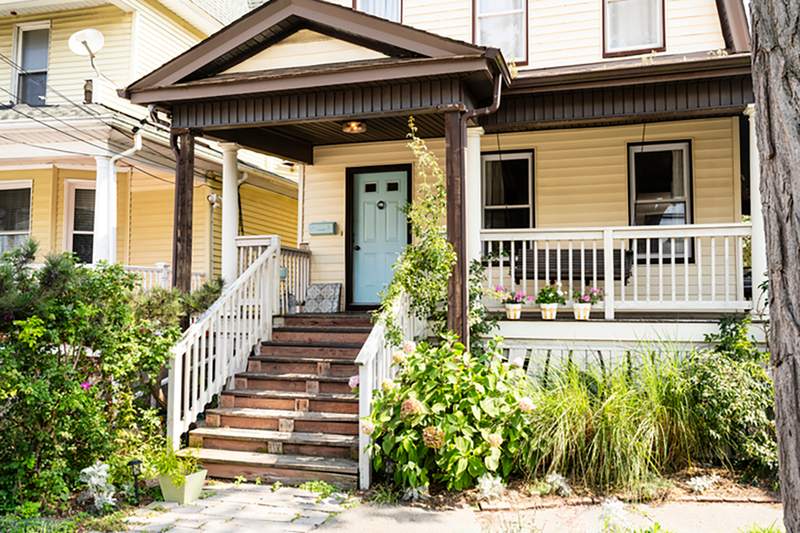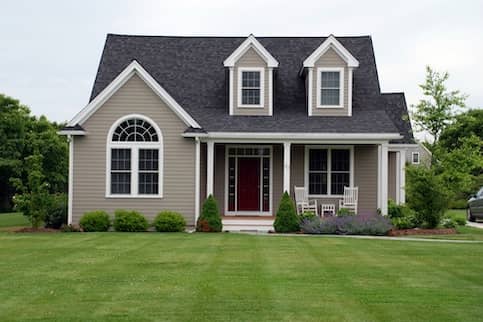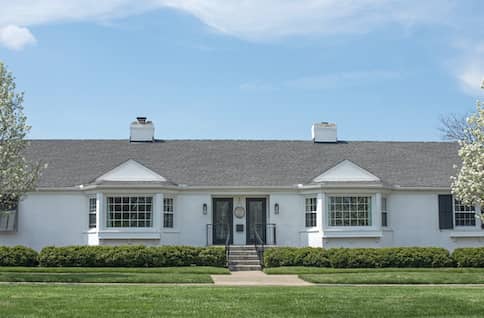Buying an investment property is different from buying a home you plan to live in. When you buy a home to live in yourself, you may not be so concerned with getting a good return on your investment. Sure, it would be nice to make money when you sell the home eventually. But that’s something you may not be looking to do for many years.
With an investment property you plan to rent out for income, your goal is specifically to make money. For this reason, you need to do your share of legwork. That means researching local school districts, vacancy rates and property taxes, among other things, to see if your investment is likely to pay off.
Another factor you’ll want to look at is gross rent multiplier, or GRM. Here, we’ll review the gross rent multiplier formula and explain why it’s so important when you’re looking at a real estate investment.
What Is Gross Rent Multiplier?
Gross rent multiplier (GRM) is a measure real estate investors can use to evaluate an investment property. GRM is expressed as a ratio that compares the current market value of a rental property to its annual gross rental income. The lower the ratio, the more likely a property may be to offer a more favorable return on investment.
GRM helps real estate investors calculate how profitable different rental properties may be based on their gross annual rental income. It’s a helpful formula to use when the market is changing quickly.
GRM also gives real estate investors a way to determine the value of a property and compare it to other rental properties on the market. Although there are limits to what GRM can tell you, it’s a good way to do a basic assessment of a property. If a given property’s GRM is too high compared to other properties in the same area, it could indicate that the property isn’t an ideal investment.
What’s Your Goal?
Buy A Home
Discover mortgage options that fit your unique financial needs.

Refinance
Refinance your mortgage to have more money for what matters.
Tap Into Equity
Use your home’s equity and unlock cash to achieve your goals.
Gross Rent Multiplier Formula
Now that you understand what GRM is, you’ll need to know how to calculate GRM. Let’s review the GRM formula.
How To Calculate Gross Rent Multiplier
The GRM formula is as follows:
- Gross Rent Multiplier = Current Market Value / Gross Annual Rental Income
Some formulas may substitute a rental property’s listing price for its current market value, but you should know that they are not necessarily one and the same. You may want to err on the side of caution and use the current market value.
Now, let’s put the gross rent multiplier formula to work.
Let’s say you’re considering investing in a multifamily property but want to know the GRM first. The property’s market value is $1.5 million, and the gross annual rental income is $300,000, giving you a GRM of 5.
Meanwhile, let’s say there’s another property on the market you’re considering, only its market value is $2.1 million. If the property’s gross annual rental income is also $300,000, using the GRM formula, we get 7. This could indicate that the first property may be a better investment, since it has a lower GRM.
Of course, in some scenarios, you may not know what a property’s annual gross rental income entails. In that case, you’d need to do more research and see what comparable properties are charging for rent.
What Is A Good Gross Rent Multiplier?
Some real estate professionals might say that a good GRM is usually between 4 and 7, as this indicates that the property is well priced. If the GRM is too high, that could indicate that the seller is asking too much for the property.
However, it’s worth noting that there’s no universal standard for what’s considered a good GRM versus a bad one. In markets where properties are highly priced, you may be looking at higher GRMs.
Rather than fixate on what a good GRM entails, a better bet may be to use the GRM formula to compare properties within the same market. It may be that properties in that market have a higher GRM than properties in a different market. But if you have a reason to be in that specific market, then your next best bet is to compare nearby properties’ GRMs to see which one is likely to yield the best return on investment.
Ready To Become A Homeowner?
Get matched with a lender that can help you find the right mortgage.
The Downside Of Using Gross Rent Multiplier
While GRM is a simple way to compare two properties in the same real estate market, it may not give you a full picture. The GRM formula does not account for the cost of owning a rental property, such as property taxes, insurance and utilities.
It may be that one rental property has a lower GRM than another, but higher operating costs that eat into profits. It’s important to do a lot of research when looking for an investment property and not rely on GRM alone.
Is GRM Different From Cap Rate?
Both capitalization rate, or cap rate, and GRM are measures used by real estate investors to assess a property’s return on investment. GRM is used to estimate the value of an income-producing property based on the gross rental income. It’s a simple way to compare the income potential of several properties, but it doesn’t consider the expenses, financing costs or vacancy rates that may be associated with them.
The cap rate is also used to determine the potential return on investment of a property, but it does this by dividing the net operating income (NOI) by its current market value (or sale price). A higher cap rate suggests a higher return on investment. Since the cap rate considers both the income generated by a property and its operating expenses, it can be a more comprehensive way to measure profitability.
As a real estate investor, it could be beneficial to use both the GRM formula and cap rate to assess an investment opportunity. Do keep in mind, though, that operating expenses can change over time – sometimes for the better, sometimes for the worse.
That said, market values can change, too. An oversupply of properties can result in a decline in individual property value within a given market. It could also result in lower rents.
As a real estate investor, the most you can really expect from GRM and cap rate are a snapshot based on the current state of the market. It’s important to build some flexibility into your investing strategy to account for changing market conditions.
Take The First Step To Buying A Home
Find a lender that will work with your unique financial situation.
FAQ On Gross Rent Multiplier
Here are some commonly asked questions about GRM.
The Bottom Line About GRM
GRM provides an easy way to compare multiple properties. It can help you understand whether a given property is a good investment or you should keep looking.
Now that you know how to calculate GRM, you can incorporate it into your research the next time you’re looking to add a rental property to your real estate portfolio. However, GRM should really be used only as a starting point since it doesn’t consider operating expenses. Ideally, it should be used alongside other investing tools to help you make an informed decision.

Maurie Backman
Maurie Backman has more than a decade of experience covering personal finance topics that include mortgages, loans, retirement, Social Security, and investing. Prior to becoming a full-time writer, she worked in the financial industry as well as in product design and marketing. Maurie holds a bachelor's degree from Binghamton University, where she studied creative writing and finance. She was happy to combine her two areas of study into a career that allows her to educate consumers on a host of financial topics.












